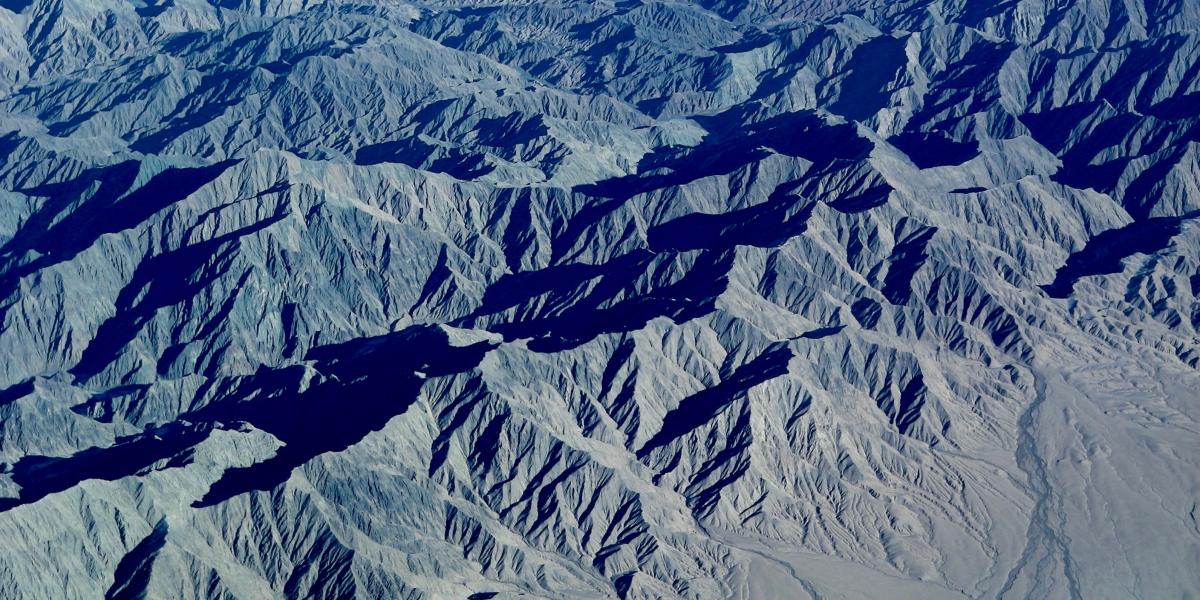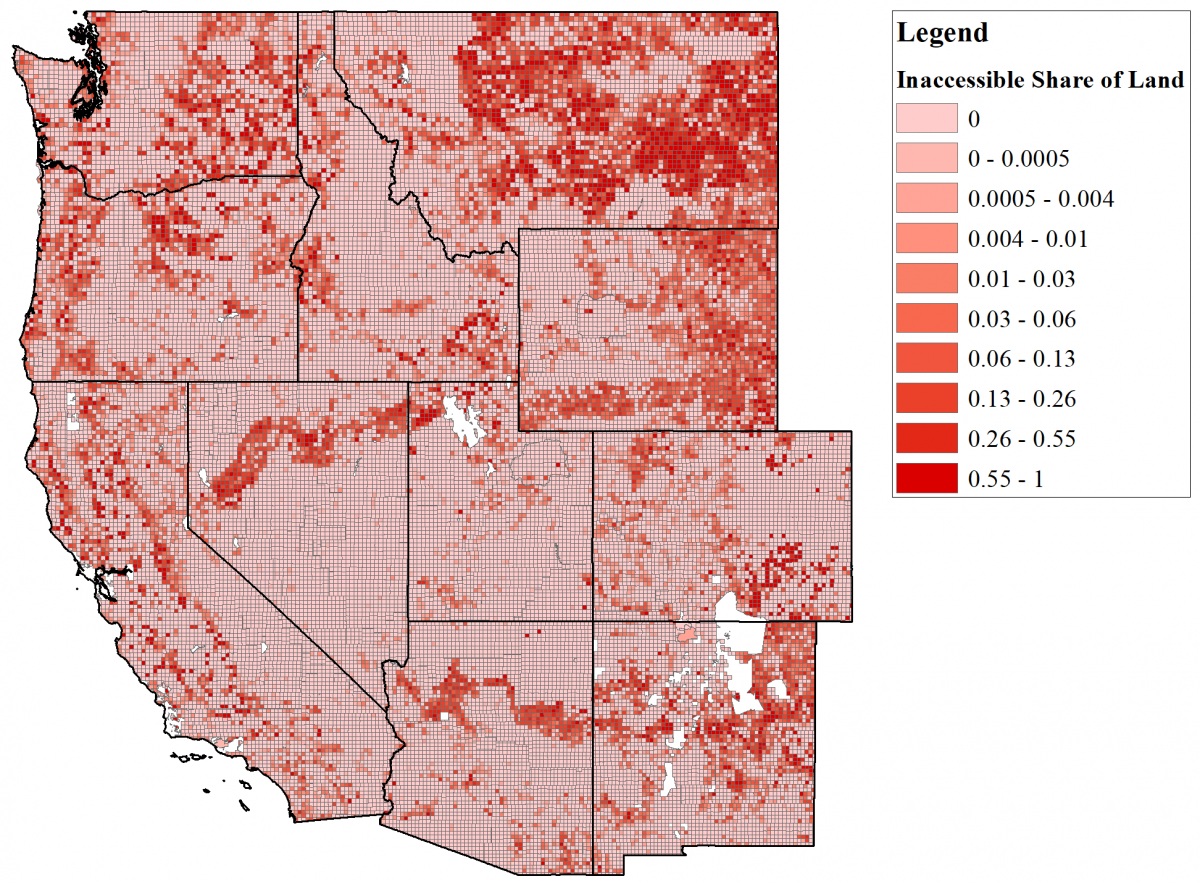
The federal and state governments own and manage about one-half of the land in the western U.S. Which lands ended up in the public domain is more of an accident of history than the result of deliberate resource planning. During the 19th century, federal land policy was focused on transferring ownership to Euro-American settlers. For example, the Homestead Act of 1862 granted 160 acres for free to settlers who made “improvements” to the land and occupied it for five years. As well, the federal government granted land to railroads to encourage the building of transcontinental routes. Railroads were given alternating 1×1-mile sections of land in a 20 to 40-mile wide band as the track was completed. The federal government retained the rest of the land with the intention of selling it to private interests.

Figure 1. The share of all land that is stranded public land, by township, in the western U.S.
To a large degree, the western public lands as we know them today (e.g., National Forests, Bureau of Land Management lands) were assembled from lands that were never successfully transferred to private hands. Some lands were never claimed by homesteaders or homesteads failed and the land reverted to the federal government. Some of the retained lands along the rail routes never sold, creating checkerboards of private and public land that persist to this day.
This haphazard process for designating public lands left significant amounts of them inaccessible to the public. Throughout the West, there are public land parcels with no road access that are completely surrounded by private land. In addition, public lands in the checkboards are often inaccessible because of legal prohibitions on crossing at corners. Bryan Leonard from Arizona State University and I estimate that there are about 6 million acres of “stranded” public lands in the 11 western states. Figure 1 shows how these stranded lands are spatially distributed.
Professor Leonard and I are collaborating on several research projects related to stranded public lands. In our first project, Bryan and I look at the effect of stranded public lands on local economies. We find that stranded public lands have a large negative effect on land markets in western counties. For the average county, a 10% increase in stranded land leads to a 2% county-wide reduction in private land value. We attribute this to access limitations, which reduces opportunities for resource development and recreation. A key insight from our study is that accessibility plays a central role in determining effects of public lands on local economies.
In a second project, along with Matthew Wibbenmeyer from Resources for the Future, we explore the effects of stranded public lands on wildfires. Since the 1970s, wildfire activity has been increasing in the western U.S., and we examine the potential contribution of stranded public lands. We compare fires that start on stranded and accessible public lands, finding that strandedness increases fire size by about 20%. Finally, in collaboration with Ashley Larsen and Claire Powers at UCSB, we are studying whether exchanging stranded public land for private land can improve habitat connectivity for migratory wildlife.
Western public lands provide a large variety of benefits to U.S. citizens, but many of these require access. Our research shows that, as a result of access limitations, stranded public lands may negatively affect local economies, contribute to larger wildfires, and hinder the movement of wildlife. Private-public land swaps may be a way to remedy these problems.



